-
 Bitcoin
Bitcoin $117700
-0.03% -
 Ethereum
Ethereum $3805
0.49% -
 XRP
XRP $3.098
-1.00% -
 Tether USDt
Tether USDt $1.000
0.03% -
 BNB
BNB $792.8
-1.72% -
 Solana
Solana $177.9
-1.95% -
 USDC
USDC $1.000
0.02% -
 Dogecoin
Dogecoin $0.2202
-1.55% -
 TRON
TRON $0.3278
-2.92% -
 Cardano
Cardano $0.7641
-2.43% -
 Hyperliquid
Hyperliquid $42.21
-2.68% -
 Sui
Sui $3.758
-1.58% -
 Stellar
Stellar $0.4080
-3.21% -
 Chainlink
Chainlink $17.75
-0.33% -
 Bitcoin Cash
Bitcoin Cash $591.8
4.96% -
 Hedera
Hedera $0.2561
-3.09% -
 Avalanche
Avalanche $23.34
-4.24% -
 Litecoin
Litecoin $110.7
1.96% -
 UNUS SED LEO
UNUS SED LEO $8.956
-0.01% -
 Toncoin
Toncoin $3.410
0.79% -
 Ethena USDe
Ethena USDe $1.001
0.03% -
 Shiba Inu
Shiba Inu $0.00001288
-1.82% -
 Uniswap
Uniswap $10.07
-2.06% -
 Polkadot
Polkadot $3.807
-2.27% -
 Monero
Monero $308.2
-2.15% -
 Dai
Dai $1.000
0.03% -
 Bitget Token
Bitget Token $4.521
-0.30% -
 Pepe
Pepe $0.00001134
-1.52% -
 Cronos
Cronos $0.1457
0.65% -
 Aave
Aave $274.9
-2.47%
How to identify the rising signal of 15-minute volume breakthrough of the previous high + 5-minute MACD quickly crossing the zero axis?
A 15-minute volume breakout above the prior high, confirmed by a 5-minute MACD cross near zero, signals strong bullish momentum and high-probability entry.
Jul 29, 2025 at 04:21 pm
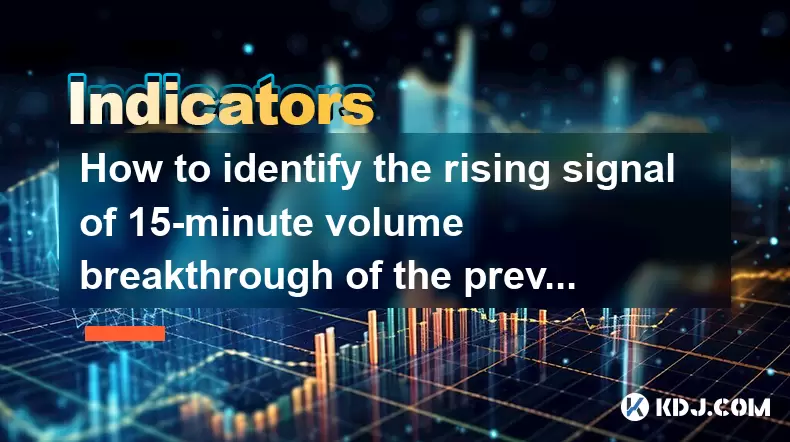
Understanding the 15-Minute Volume Breakout of the Previous High
Identifying a volume breakout on the 15-minute chart that surpasses the volume of the prior high is a strong indication of increasing market participation and potential directional momentum. This signal occurs when the current 15-minute candle not only exceeds the price level of the previous high but also shows a significant spike in trading volume compared to earlier candles. To spot this, traders must first mark the most recent swing high on the 15-minute chart. Once this level is identified, monitor subsequent candles for both price and volume behavior.
- Open your preferred trading platform and load the 15-minute timeframe for the cryptocurrency pair of interest (e.g., BTC/USDT).
- Use the horizontal line tool to draw a level at the most recent high.
- Enable the volume indicator below the price chart and observe volume bars.
- Wait for a candle that closes above the previous high with a volume bar that is visibly larger than the volume during the formation of that prior high.
- Confirm the breakout by ensuring the candle closes above the resistance level, not just wicks through it.
This volume surge suggests strong buying pressure and reduced likelihood of a false breakout. The combination of price surpassing resistance and volume confirmation increases the reliability of the signal.
Monitoring the 5-Minute MACD for a Fast Zero-Axis Cross
While the 15-minute volume breakout provides the broader context, the 5-minute MACD (Moving Average Convergence Divergence) adds a short-term momentum layer. The goal is to detect when the MACD line (blue line) crosses above the signal line (orange line) while both are near or just crossing the zero axis. A quick cross from below to above zero indicates accelerating bullish momentum.
- Switch to the 5-minute chart of the same cryptocurrency pair.
- Apply the MACD indicator with default settings (12, 26, 9) unless customized.
- Observe the MACD histogram: a shift from negative (red bars below zero) to positive (green bars above zero) is critical.
- Watch for the MACD line to cross above the signal line within the same candle or immediately after.
- Ensure the cross occurs at or near the zero line, not deep in positive territory, to confirm fresh momentum.
This rapid cross suggests that short-term sentiment is shifting from neutral or bearish to bullish. When this happens shortly after the 15-minute volume breakout, it reinforces the strength of the upward move.
Aligning Timeframes for Signal Confluence
The key to this strategy lies in temporal alignment between the two signals. The 15-minute volume breakout must precede or coincide with the 5-minute MACD zero-axis cross. This confluence increases the probability of a sustained move.
- After identifying the 15-minute breakout candle, check the corresponding 5-minute sequence during that same period.
- Look for the first 5-minute candle where MACD crosses above zero after the breakout.
- If the MACD cross occurs within one to three 5-minute candles after the breakout closes, the signal is considered timely.
- Avoid entries if the MACD cross happens significantly later, as momentum may have already been priced in.
This synchronization ensures that volume-driven price action is being supported by immediate momentum confirmation. Misalignment could indicate a lagging reaction or weak follow-through.
Setting Up Alerts for Faster Execution
Given the speed at which crypto markets move, manual monitoring can lead to missed opportunities. Setting up automated alerts enhances responsiveness.
- On platforms like TradingView, create a custom alert for volume spikes on the 15-minute chart.
- Use a condition such as:
volume > volume[1] * 1.5 and close > high[1]
- Use a condition such as:
- Create a second alert for the 5-minute MACD:
- Condition:
macd_line > signal_line and macd_line > 0 and macd_line[1] <= 0
- Condition:
- Enable push notifications or email alerts for both conditions.
- Test alerts in a demo environment to avoid false triggers.
These alerts allow traders to react within seconds of signal formation. Combining both alerts ensures that only setups meeting both volume and momentum criteria are flagged.
Entry and Initial Risk Management
Once both signals are confirmed, executing the trade with precision is essential. The entry should be taken at the close of the 5-minute candle where the MACD crosses zero, provided the 15-minute breakout remains intact.
- Enter a long position at the close of the confirming 5-minute candle.
- Place a stop-loss just below the low of the 15-minute breakout candle or the most recent swing low.
- Set a take-profit level at the next key resistance, or use a risk-reward ratio of at least 1:2.
- Consider scaling out: close 50% at first target, move stop-loss to breakeven, and let the rest run.
Position size should reflect the stop-loss distance and account risk parameters. For example, risking no more than 1% of the account on a single trade.
Common Pitfalls and How to Avoid Them
Traders often misinterpret signals due to noise or improper filtering. One common error is acting on a volume spike without price confirmation. Volume alone does not confirm a breakout; price must close above the prior high.
Another issue is MACD divergence: a cross above zero that occurs without volume support may be a false signal. Always require both conditions to be met.
- Avoid trading during low-liquidity periods such as major exchange downtimes or holidays.
- Filter signals during news events that can cause erratic volume and MACD behavior.
- Use exchange-specific volume rather than aggregated volume from multiple sources to avoid distortion.
These precautions help maintain signal integrity and reduce emotional trading.
Frequently Asked Questions
What if the 5-minute MACD crosses zero but the 15-minute volume doesn’t break the prior high?
This scenario lacks confluence. The volume breakout is a foundational element. Without it, the MACD cross may reflect minor momentum, not institutional-level participation. Avoid taking the trade.
Can this strategy be applied to altcoins with lower liquidity?
It can, but with caution. Low-volume altcoins are prone to whipsaws and spoofing. Ensure the volume spike is at least 2–3 times the average of the last 10 candles to filter out noise.
How do I adjust the MACD settings for faster signals?
Some traders use settings like (8, 17, 6) for quicker responsiveness. However, this increases false signals. Always backtest any changes on historical data before live use.
Is it necessary to use the exact 15-minute and 5-minute timeframes?
The 15-minute provides sufficient context, while the 5-minute offers timely momentum. Using different intervals (e.g., 30-minute and 10-minute) may delay or distort the signal timing. Stick to the specified timeframes for consistency.
Disclaimer:info@kdj.com
The information provided is not trading advice. kdj.com does not assume any responsibility for any investments made based on the information provided in this article. Cryptocurrencies are highly volatile and it is highly recommended that you invest with caution after thorough research!
If you believe that the content used on this website infringes your copyright, please contact us immediately (info@kdj.com) and we will delete it promptly.
- LYNO Token Presale: AI Arbitrage Revolution in DeFi
- 2025-07-31 05:11:11
- Pepecoin Successors: Can These Cryptocurrencies Make You a Millionaire?
- 2025-07-31 05:50:12
- AML Bitcoin Fraud: Cracking Down on Crypto Crime in the Big Apple and Beyond
- 2025-07-31 04:33:53
- Cardano (ADA) in 2025: Navigating Crypto's Future
- 2025-07-31 03:52:07
- Solana Meme Coin Price Prediction: Will the Frog Outleap the Dog?
- 2025-07-31 03:52:07
- Bitcoin's Bullish Outlook: CryptoQuant's Insights on Futures Market Cooling
- 2025-07-31 03:59:10
Related knowledge

How to identify sell signals with the AVL indicator?
Jul 31,2025 at 07:09am
Understanding the AVL Indicator and Its Core ComponentsThe AVL indicator, also known as the Accumulation Volume Line, is a volume-based technical anal...

How does the VWAP line help in identifying overbought and oversold market conditions?
Jul 31,2025 at 05:19am
Understanding the VWAP Line and Its Role in Technical AnalysisThe Volume Weighted Average Price (VWAP) is a critical tool used by traders within the c...
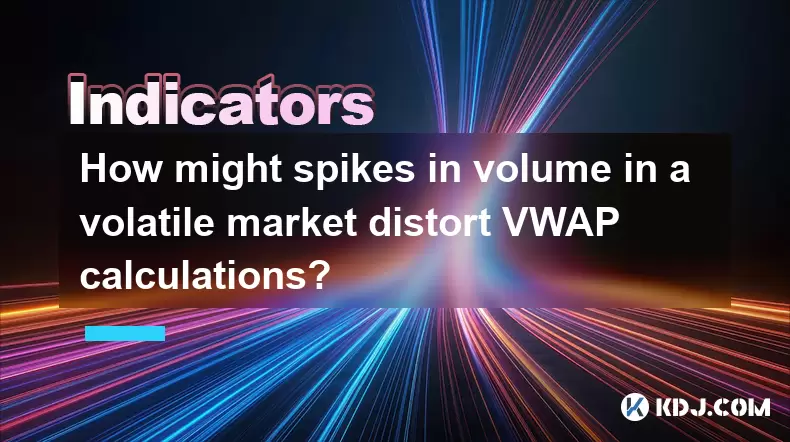
How might spikes in volume in a volatile market distort VWAP calculations?
Jul 31,2025 at 07:40am
Understanding VWAP and Its Core ComponentsVWAP, or Volume-Weighted Average Price, is a trading benchmark that gives the average price a cryptocurrency...
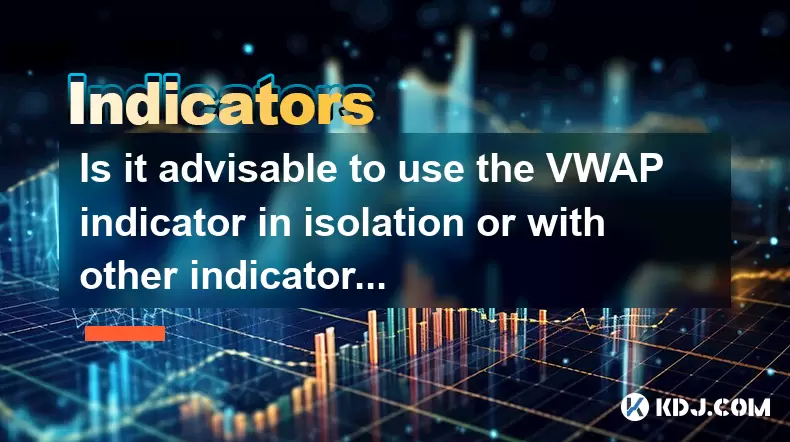
Is it advisable to use the VWAP indicator in isolation or with other indicators?
Jul 31,2025 at 06:48am
Understanding the VWAP Indicator and Its Core FunctionalityThe Volume Weighted Average Price (VWAP) is a widely used technical analysis tool in the cr...
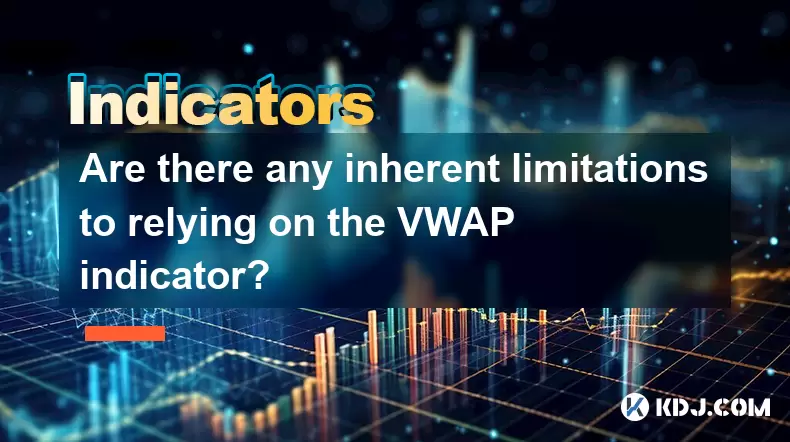
Are there any inherent limitations to relying on the VWAP indicator?
Jul 31,2025 at 07:59am
Understanding the VWAP Indicator and Its Core FunctionThe Volume Weighted Average Price (VWAP) is a widely used technical analysis tool in the cryptoc...
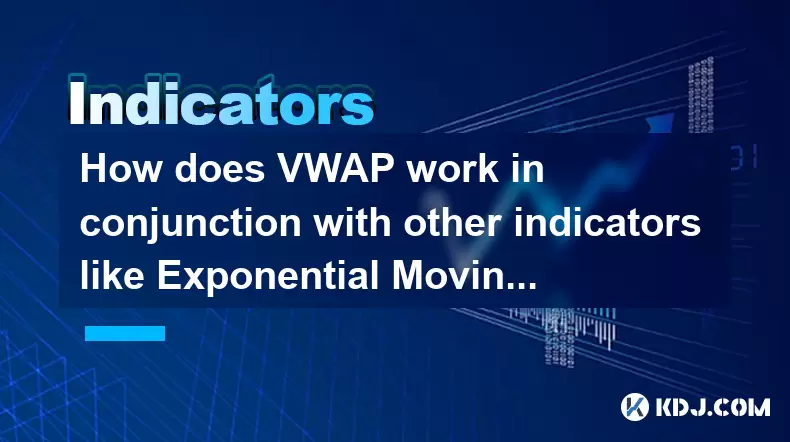
How does VWAP work in conjunction with other indicators like Exponential Moving Averages (EMAs)?
Jul 31,2025 at 04:38am
Understanding VWAP and Its Role in Crypto TradingThe Volume Weighted Average Price (VWAP) is a critical analytical tool in cryptocurrency trading, par...

How to identify sell signals with the AVL indicator?
Jul 31,2025 at 07:09am
Understanding the AVL Indicator and Its Core ComponentsThe AVL indicator, also known as the Accumulation Volume Line, is a volume-based technical anal...

How does the VWAP line help in identifying overbought and oversold market conditions?
Jul 31,2025 at 05:19am
Understanding the VWAP Line and Its Role in Technical AnalysisThe Volume Weighted Average Price (VWAP) is a critical tool used by traders within the c...

How might spikes in volume in a volatile market distort VWAP calculations?
Jul 31,2025 at 07:40am
Understanding VWAP and Its Core ComponentsVWAP, or Volume-Weighted Average Price, is a trading benchmark that gives the average price a cryptocurrency...

Is it advisable to use the VWAP indicator in isolation or with other indicators?
Jul 31,2025 at 06:48am
Understanding the VWAP Indicator and Its Core FunctionalityThe Volume Weighted Average Price (VWAP) is a widely used technical analysis tool in the cr...

Are there any inherent limitations to relying on the VWAP indicator?
Jul 31,2025 at 07:59am
Understanding the VWAP Indicator and Its Core FunctionThe Volume Weighted Average Price (VWAP) is a widely used technical analysis tool in the cryptoc...

How does VWAP work in conjunction with other indicators like Exponential Moving Averages (EMAs)?
Jul 31,2025 at 04:38am
Understanding VWAP and Its Role in Crypto TradingThe Volume Weighted Average Price (VWAP) is a critical analytical tool in cryptocurrency trading, par...
See all articles

























































































